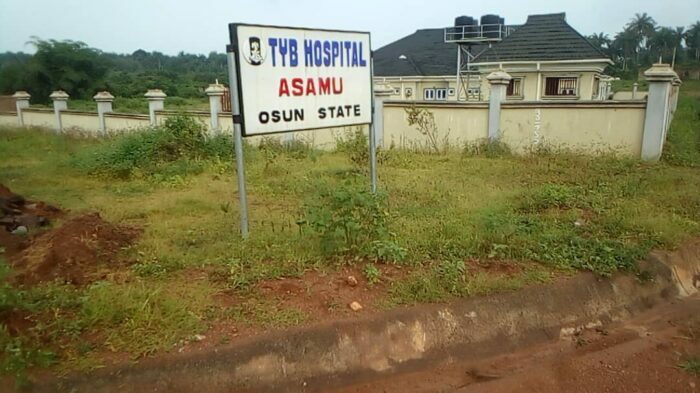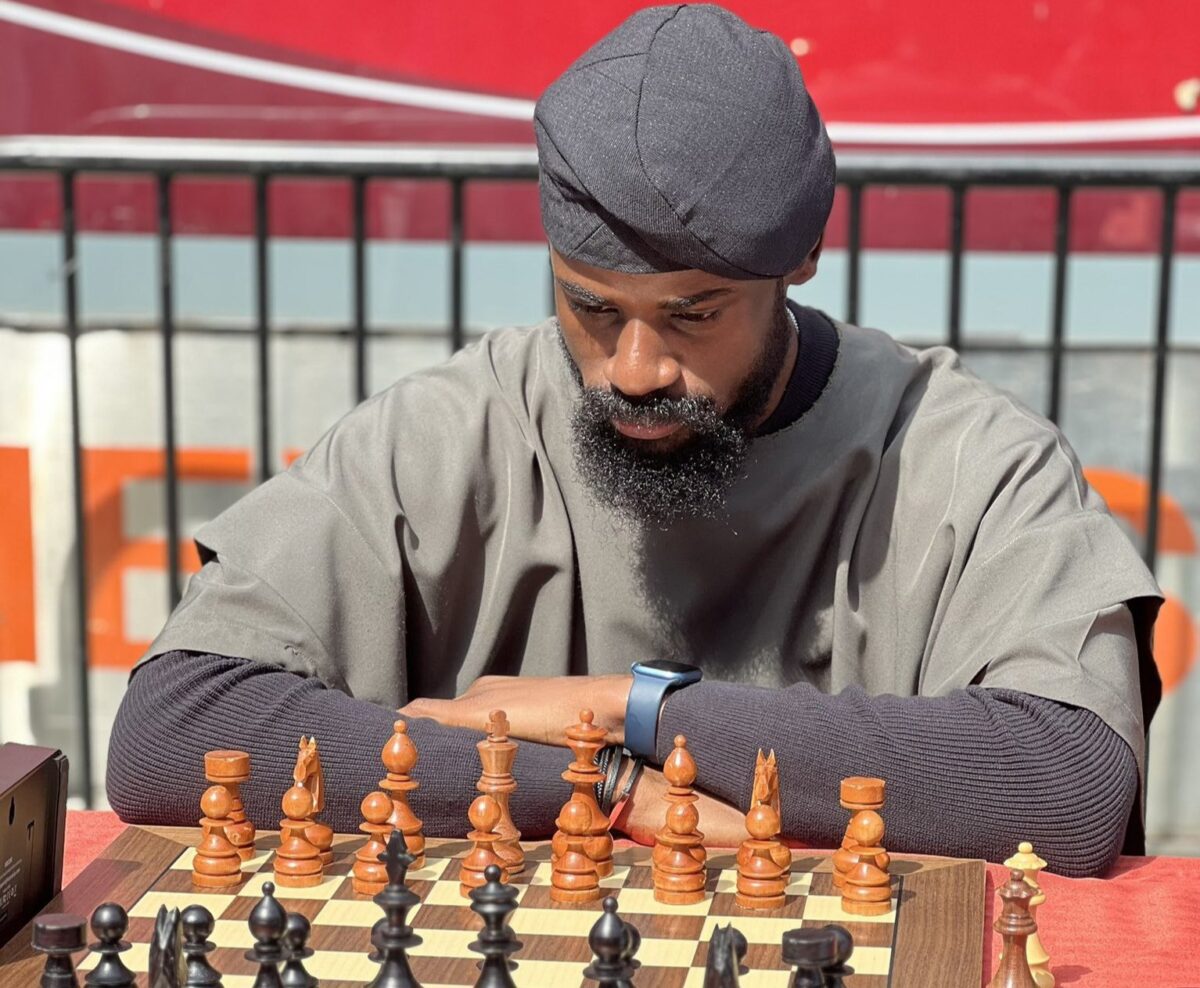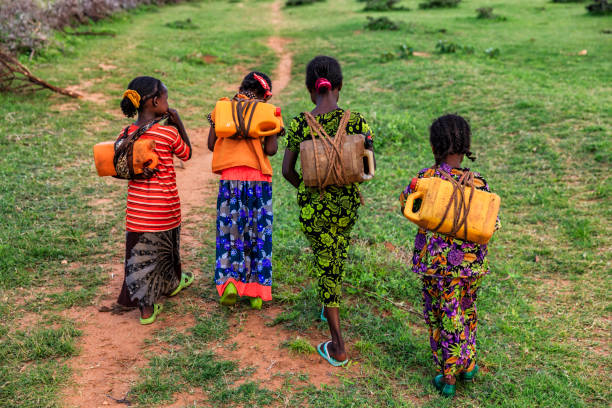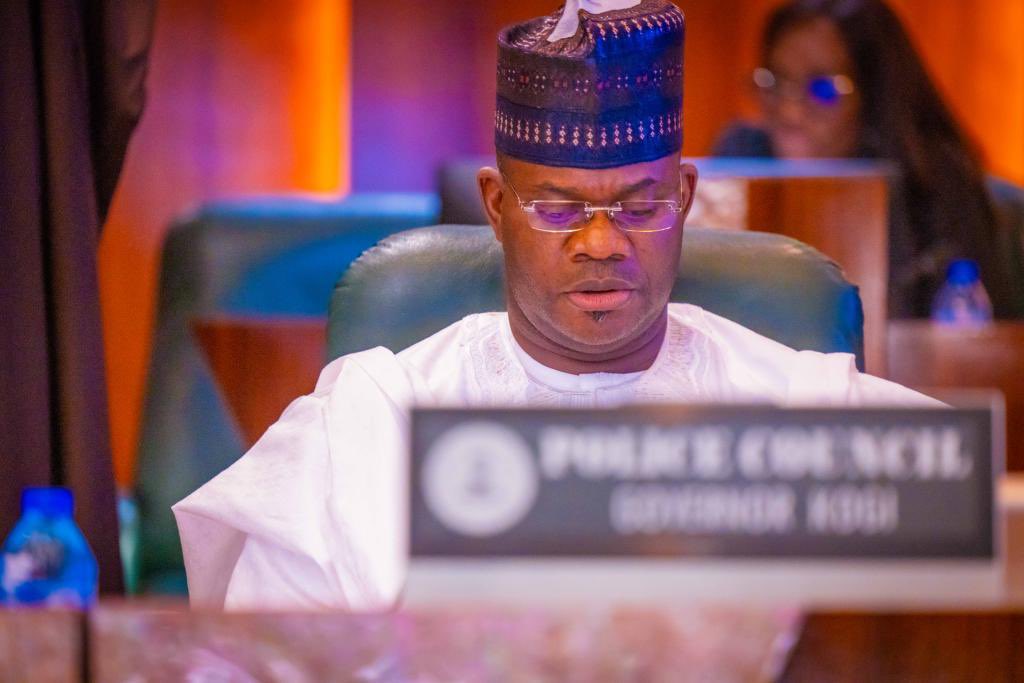On one hand, Osun State constructed some health centres across its 30 local government areas in 2009 via a United Nations N1.6 billion grant. One of such facilities was constructed in Ikonifin, Ola-Oluwa Local Government Area. On the other hand, the Nigerian Army, led by Lieutenant General Tukur Yusufu Buratai, the former Chief of Army Staff, commissioned a multi-million hospital built in Asamu town, Osun State, on September 14, 2020. The edifice is along Iwo-Osogbo road.
In both instances, the effort was geared towards increasing the local population’s access to primary and secondary health facilities in their communities. However, years after, both facilities have not lived up to their intended purpose. While the former has been destroyed, the latter is beautifully standing without qualified personnel. SODEEQ ATANDA presents his findings in this report.
Five months ago, Muideen, a commercial motorcycle rider, rushed a young boy to the TYB Hospital, Asamu, a town in the Ola-Oluwa Local Government Area in Osun State, for emergency medical attention. The young boy had suffered an automobile accident and Muideen had volunteered to take him down to the hospital. On getting there, they met a nurse on duty.
Shockingly, the nurse said she would only be able to administer a first aid treatment on the victim. After the treatment was administered, the family of the boy were forced to take him down to a private hospital in Iwo, a town that is about 45 minutes’ drive from Asamu.
“I could remember that I was called to take an accident victim to the military hospital about five months ago,” Muideen told FIJ while sitting under a makeshift shed on May 6.
“When we got there, the nurse on duty told us she could only apply first aid. Because it was urgent, we had to allow her do that, and when she was done, she referred us to a private hospital in Iwo, Iwo Local Government Area.
“Till today, I am still shocked that the hospital could only administer first aid treatment to the victim.”
READ ALSO: Osun NYSC Lodge Built 21 Years Ago Now a Safe Place for Wasps
TYB HOSPITAL ‘WILL PROMOTE OUR HEALTH‘
There was only public primary health centre in Asamu until 2020 when the Nigerian Army decided to build another health care facility in the community. This time, it was not a primary facility, but a secondary health institution.
To the inhabitants of Asamu and all the neighbouring communities, it was a beautiful development seeing that the military had deemed it fit to situate a health edifice in their community.
During the period, the inhabitants believed the development would enable easy access to quality health service delivery without people having to travel a long distance.
The rapid pace with which the construction of the uniquely stunning facility took place further assured them that better days were ahead.
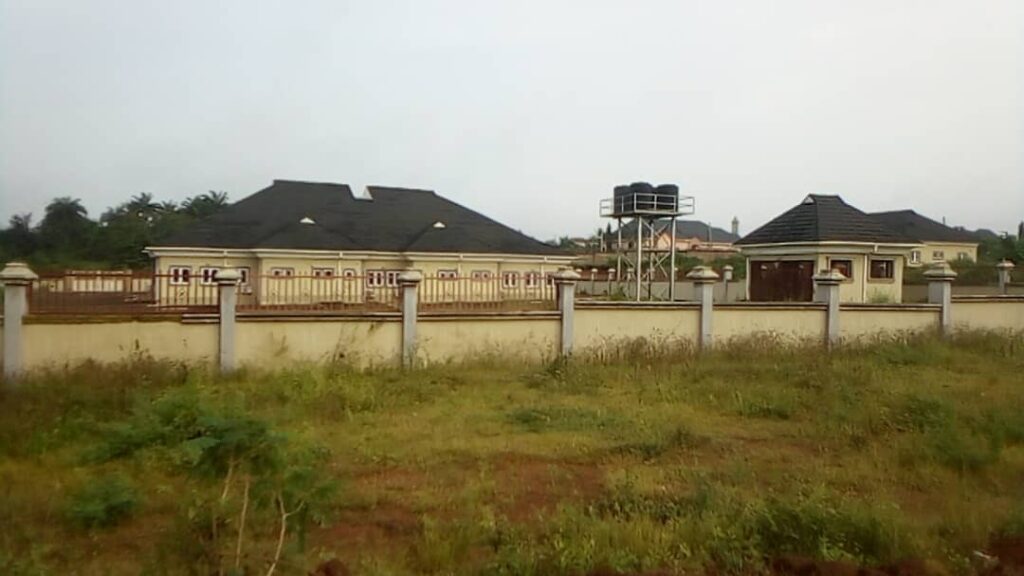
With the same enthusiasm, they graced the commissioning of the hospital about three years ago.
The town recorded a special moment in its history when the opening of the hospital was graced with the presence of Lt. General Tukur Buratai, the then Chief of Army Staff; Adegboyega Oyetola, the then Osun State Governor; Oba Enitan Oguwusi, the Ooni of Ife; Oba Abdulrasheed Adewale Akanbi, the Oluwo of Iwoland; Oba Hammed Adekunle, the Olowu of Kuta and some senior government officials, senior military and paramilitary officers.
The vast stretch of the dignitaries at the event was noted by Burutai when he said their presence spoke volumes about the importance of the projects to the befitting communities.
In a statement signed by Hassan Ifijeh Mohammed, the then Deputy Director, Army Public Relations, on September 15, the project was part of COAS’ several contributions to support the Nigerian Army’s non-kinetic line of operations.

Commenting on the important role the edifice would play in the environment, Oba Hammed Adekunle of Kuta, a neighbouring community to Asamu, said, “The hospital and bridge will promote our health, the standard of living of our people and also increase commerce in our area”.
When Adekunle said this, the communities received this statement with excitement.
For the first three months of opening the facility, community members enjoyed free medical consultations and treatment. Paid services were to start after the three-month period, they told FIJ.
A local politician, popularly known as Ataare, told FIJ that he initially believed the hospital had come to solve one of their major problems.
“After I benefitted from the period of free services, I thought our problem as a people around here had been solved. They checked me, and based on their observation, I was given some drugs. The drugs were very effective,” Ataare said.
“When the hospital started charging people for treatments however, people abandoned it. They stopped going to the place for treatment.”
READ ALSO: SPECIAL REPORT: Osun Post Office Where Workers Don’t Accept Consignments for Fear of Rain
‘WE DON’T KNOW IF IT IS WORKING‘
Most of the inhabitants who spoke with FIJ were not sure if the facility was still functioning.
FIJ spoke with Iya Opeyemi, a nursing mother, and Ayo, a teenager, on the operational status of the hospital, and they said they were unsure.
“You can go there, but I am not sure they are still using it. I last saw it function in 2020 after the hospital was commissioned and doctors gave free services,” Iya Opeyemi told FIJ on May 6.
Asked where she delivered her baby, Iya Opeyemi said, “I delivered her at the maternity in the community, close to the king’s palace.”


Speaking on why the place had not been put to effective use since it was opened, Muideen, the motorcycle rider, mentioned locals’ strong belief in herbal medicines and self-medication.
“Despite the presence of the facility, pregnant women still go to neighbouring communities such as Kuta and Iwo for treatment. A few days ago, I still conveyed a pregnant woman to Kuta Primary Health Care Centre so she could get the medical attention she needed,” said Muideen.
A study conducted by Peter U. Bassi, et. al., corroborated the reasons Muideen gave FIJ. The researchers could establish that self-medication and confidence in traditional medications are high among Nigerians.
“I feel this location is not the right place to build the hospital. If it were in a major community in this federal constituency, I believe it would have been better used. Another challenge is that most of our people strongly believe in herbal plants to prepare medicines and treat themselves,” said Muideen.
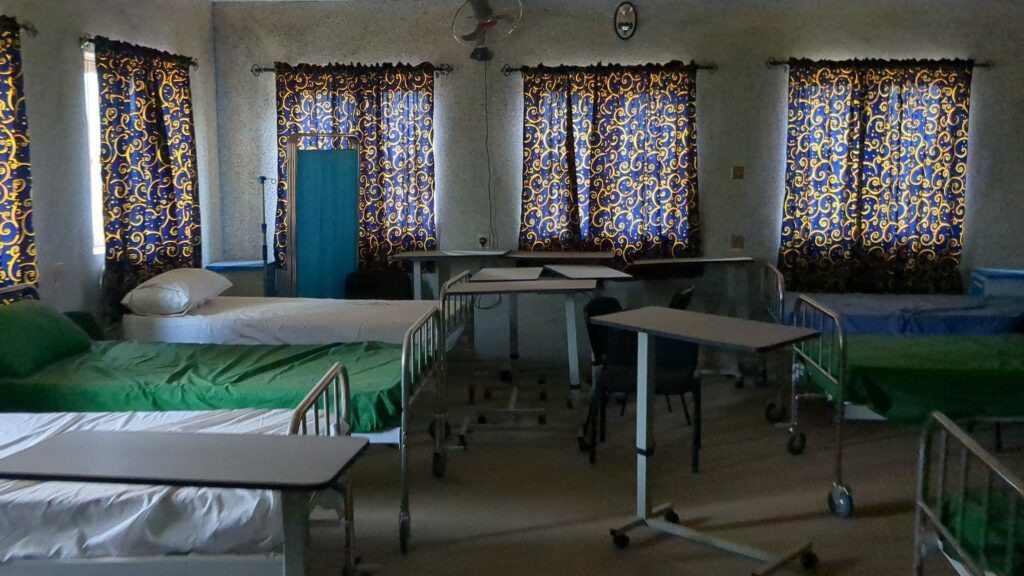
“Adjustments can still be made if the military or the government is serious about making the hospital effective. For this to be done, they would have to employ qualified specialists and embark on awareness campaigns.
“If you go inside the hospital, you would see the medical tools they have installed. I don’t think any of our pubic hospitals around here, including the only general hospital in Iwo, have any of those machines.”
MASSIVE HEALTH INVESTMENT WASTING AWAY
Attempts made by FIJ to speak with the workers at the facility did not materialise until May 7. Before then, this reporter visited the place on October 28 and 31, 2022, but the hospital was locked on both occasions.
Another motorcycle rider, who spoke with FIJ on one visit, said he was not sure the hospital was still functioning because he had never been treated there.
This reporter eventually met with Khadijat, one of the health workers of the hospital. Since it was opened, the magnificent facility had been lying unused on a sprawling expanse of land.

Both inside and outside, the hospital is still magnificent.
FIJ observed that no fewer than 12 non-functioning air conditioners were attached to the various wards and offices in the facility. A tall stanchion had four big water tanks on it.
Except for its terrace, FIJ further observed that all other parts of the structure were completely bushy, a fertile area for reptiles and other dangerous animals.
Some audacious weeds had started sprouting at the terrace as well. The doctors’ residence on the left side of the compound also reflected a great deal of neglect by the hospital’s supposed administrators.
The waiting room has eight chairs of three seats each, two plastic chairs, two standing fans and a durable stretcher. Other items in the room are two executive seats, one table, a weighing scale and two wheelchairs.
The theatre room is well-knitted and furnished. It has a surgical lamp, surgical table and bed, a trolley, two patient operation beds and a wall fan.

REFERRAL TO A FORMER DOCTOR’S PRIVATE HOSPITAL
During FIJ’s May 8 interview with Khadijat, a locally-trained nurse, she explained that she was the only one on duty for the day.
“If you come to us with a case that requires emergency treatment, we would have to refer you to our former doctor’s private hospital in Osogbo, because he doesn’t come around anymore,” she said.
“This place has not been functioning properly since the first three months of free medical consultancy and treatment in 2020.
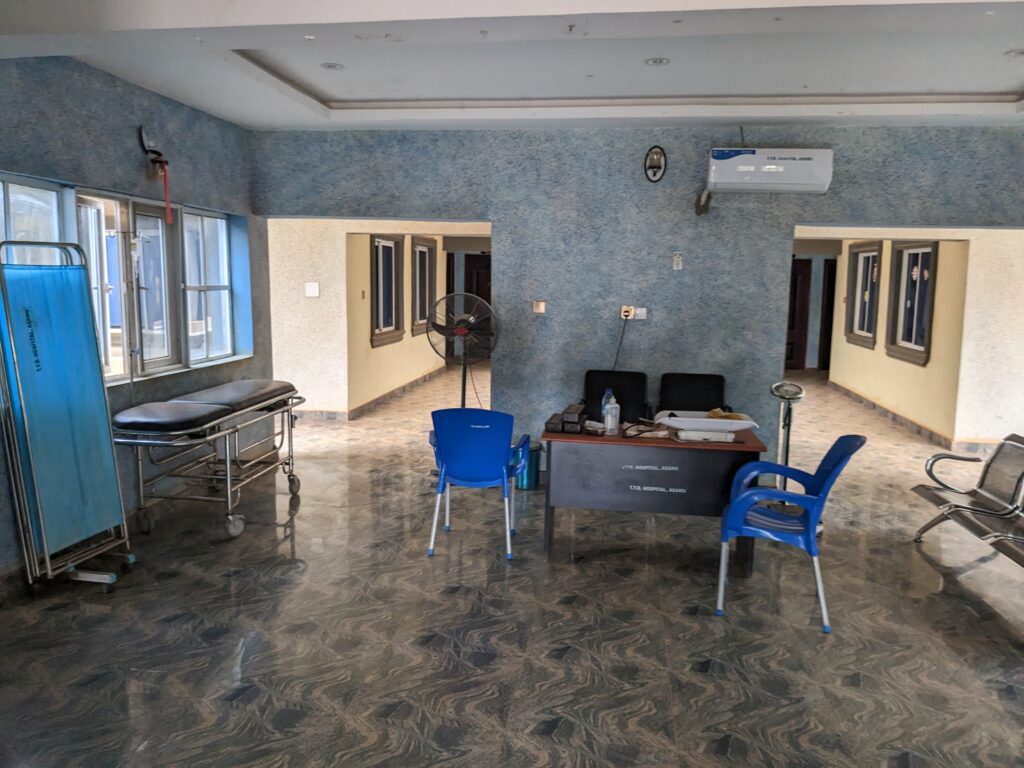
“We don’t even have cards for patients. We are hoping that the military authorities would one day rekindle their interest in this hospital. We have most of the equipment needed to deliver good health care services to the people around here. The problem is just that we don’t have adequate manpower in the hospital.”
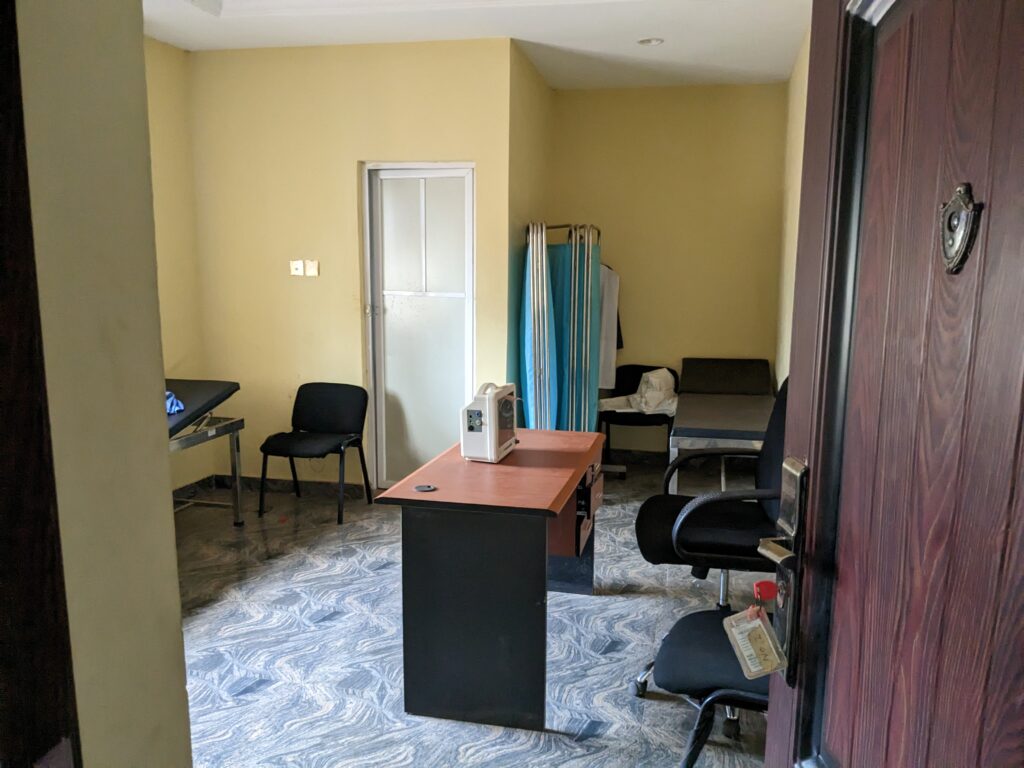
Saheed Sulaimon, the Osogbo-based doctor Khadijat said patients were usually referred to, confirmed the claim to FIJ on May 17.
“Yes, they sometimes refer patients to me. I left the place when they (the military authorities) did not do the right things,” Sulaimon said.
The multi-million naira health intervention is frittering away. As beautiful as the palatial building is, the inhabitants of the host community and those in the neighbouring areas can’t believe it’s wasting away.
It is suffering from neglect from those who are supposed to put it to use. It is a gigantic intervention providing little to no benefits to the people. The people look forward to when the facility would promote their “health and increase the standard of living of our people and also increase commerce in our area” as stated by the traditional ruler of Kuta on the Nigerian Army website.
For now, the elegant-looking hospital that is capable of providing a litany of superior services than other smaller facilities in the area remains a potential live-saver that Asamu residents hope would be brought back to life.
Efforts to get the Nigerian Army to comment on our findings were unsuccessful. FIJ filled out an inquiry form on the army website on May 17 but had not got a response at press time.
Also, Brigadier-General Nwachukwu Onyema, Director, Nigerian Army Public Relations, did not respond to FIJ’s phone call and a text message sent to him on May 19.
The army also did not respond to direct messages sent to its verified Twitter handle on the same day.
MILLENNIUM HOSPITAL IKONIFIN
The only health centre provided for the people of Ikonifin in Ola-Oluwa Local Government Area, Osun State, is located along Ile-Ogo/Bode-Osi road. It is a primary health centre with inadequate staff members.
It was a good day for Freedom Uhura and his family on May 6 when FIJ interviewed him. He was beaming with joy because he had caught fishes of various sizes and filled up his basket. He, however, spoke on the challenge he and other residents of the settlement go through in order to access health services in the area.
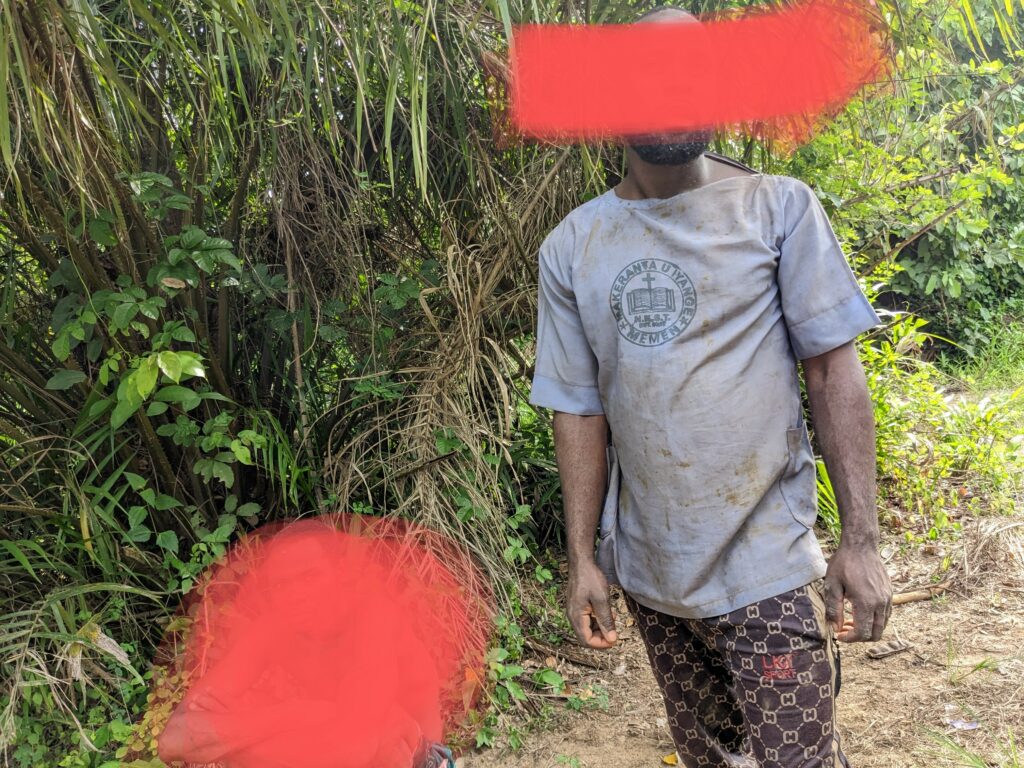
“Look at my child [pointing to the baby on the ground], whenever he has malaria, we have to take him to Iwo for treatment. If we cannot go to Iwo, we would just get medicines in a pharmacy because the available primary health facility is not always an option when it comes to getting necessary treatments. It is either they complain of incapacity to attend to our complaint or there are no drugs. One hospital is not enough for our population here,” Uhura told FIJ.
Uhura is not the only local complaining of inadequate health services. Other residents also have negative tales to tell.
MDG HOSPITAL: A COMPLEMENTARY FACILITY
Unknown to Uhura, the government had long identified Ikonifin as a location that needed an additional health facility. This realisation made the authorities establish another hospital to improve the health and wellbeing of local dwellers. The new hospital was also built to take pressure off the existent health care system in the area.

The Osun State government earmarked N310,000,000 from the N1,667,000,000 Millennium Development Goals (now Sustainable Development Goals) grant it received in 2009 to construct one health centre per each local government council in the state.
Ikonifin was selected to host the one meant for Ola-Oluwa Local Government Area. Upon completion of the hospital, it was named the Millennium Development Goals Hospital (MDG Hospital).
Sadly, and despite the availability of a newly built hospital, operations came to an abrupt end due to some avoidable incidents.
SUBSTANDARD CONSTRUCTION MATERIALS
Sources that spoke to FIJ on the development said two contractors handled the construction of the health centre in 2010.
The first company had done its job to an advanced stage when a new dispensation came to power. With a new government at the helm of affairs, the contract was withdrawn from the first company and given to another company.
Oba Solomon Ojo, the Onifin of Ikonifin, told FIJ that the first company fostered a robust engagement with the community during the early stage of the construction before the government replaced it. When the second company took over the project, the story changed.
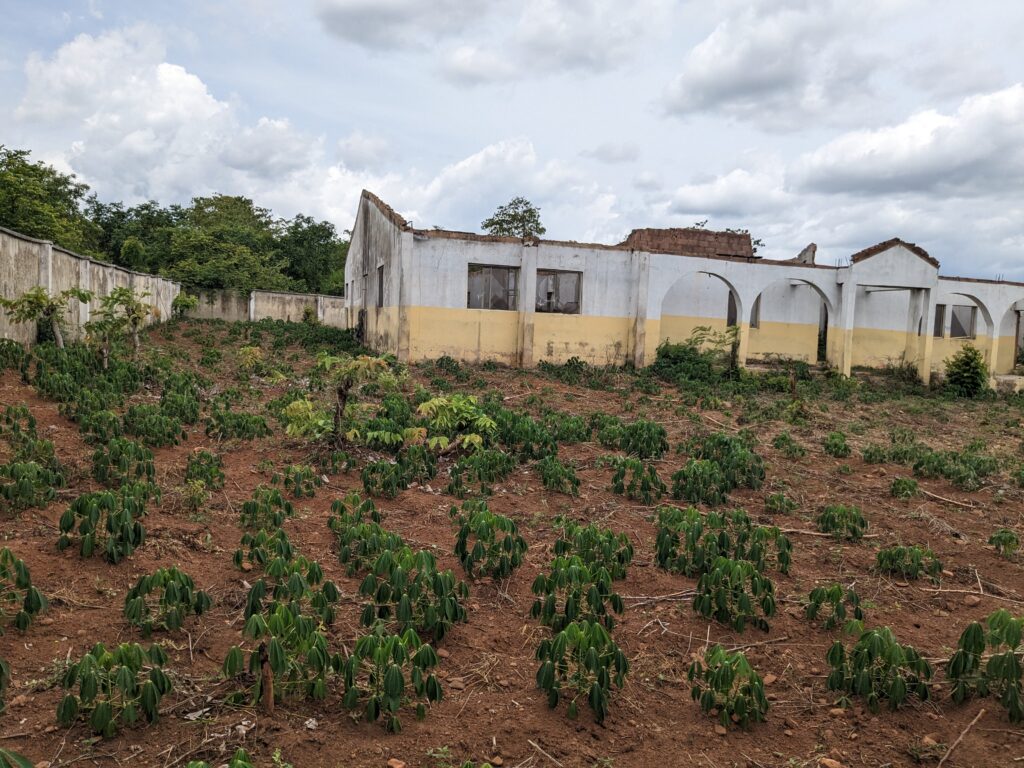
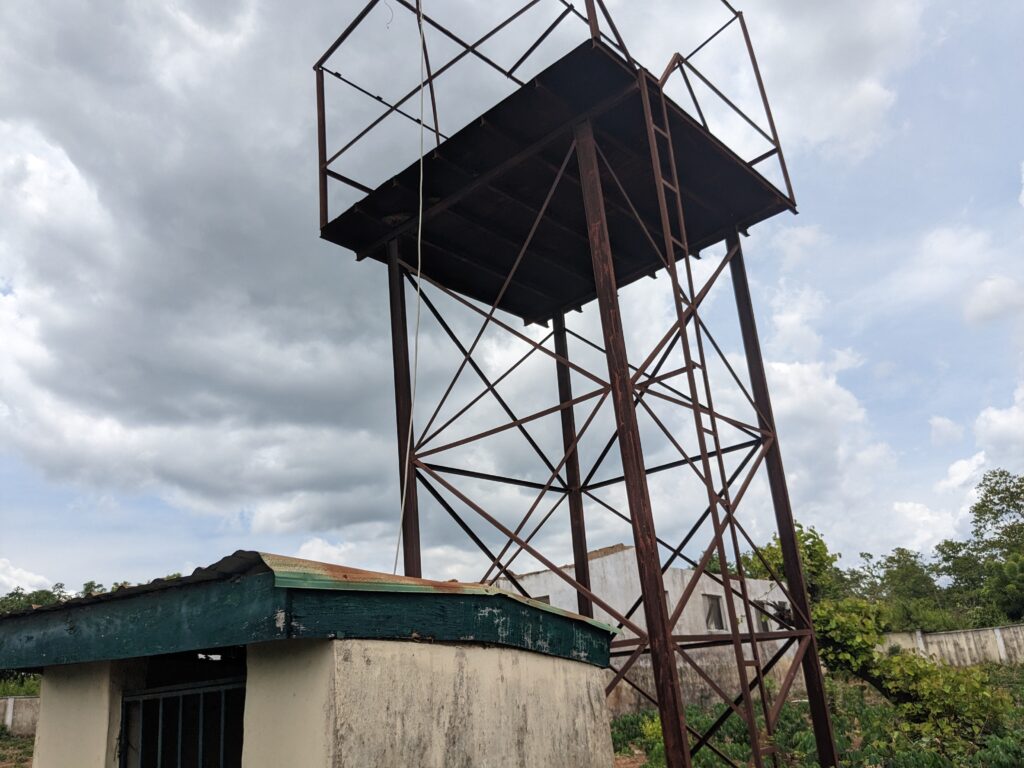
The traditional ruler stated that the second contractor largely used poor building materials.
“The poor quality of the materials he (the second contractor) used started manifesting poor results a few months after completion. The ceiling started falling off and floor began cracking in many places,” Oba Ojo told FIJ.
He also spoke on the equipment provided in the centre after completion.
“The hospital was adequately equipped. The government meant well for us to the extent that an ambulance was attached to it for efficient service delivery,” the traditional ruler said.
“In the end, the hospital got burnt under mysterious circumstances.”
POOR STAFFING, NEGLECT AND DESTRUCTION
Similar to the personnel crisis facing the military hospital in Asamu, investigation showed that the burnt MDGs hospital also started off with manpower malaise.
Oba Solomon revealed to FIJ that the staffers at the existing primary health centre redistributed themselves in order to put the new facility to use.
“Two health workers were deployed to the MDGs hospital, one from the existing hospital and another from somewhere in Iwo,” he said.
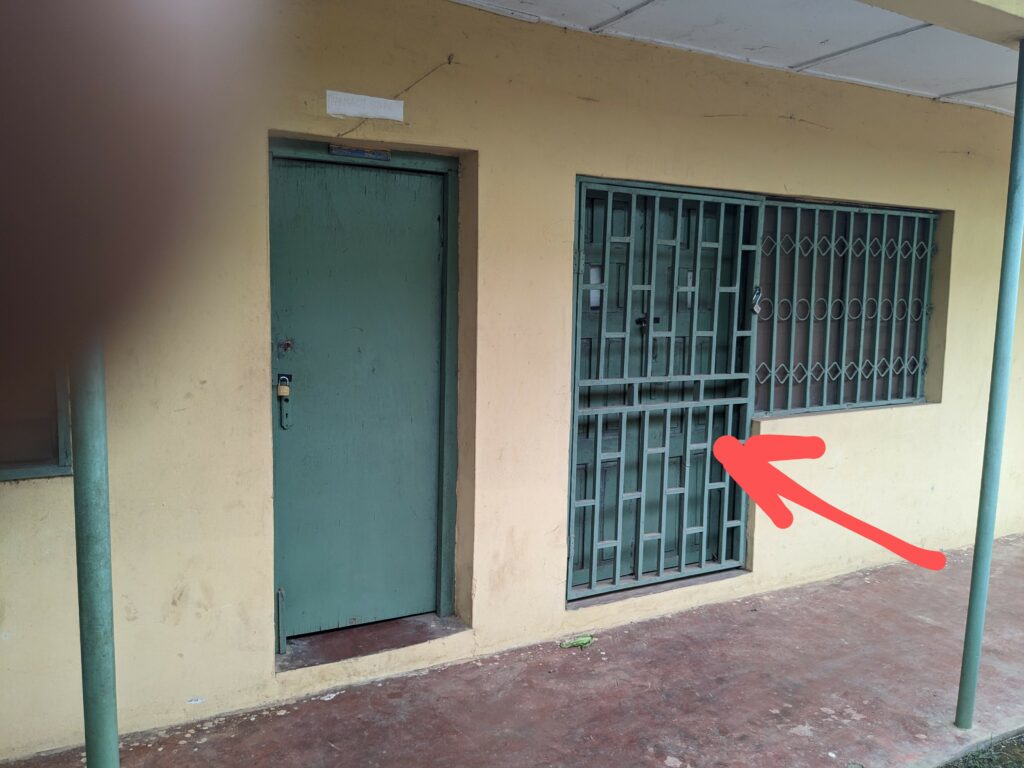
“The workers were there for about a year. Their stay was hampered by many factors. The roof started leaking within a short time and the staffers developed feelings of insecurity. Suddenly, they abandoned the place and put it under lock.
“As a community leader, I was not happy to see it waste away. I contacted the authorities at the local and state levels for their intervention to revive the facility and make the most of the resources installed there. I wrote many letters to that effect. Unfortunately, my efforts were seen from a different angle by the government and I had to retreat at some point.”
FIJ also found that after some years of abandonment, the community evacuated the equipment and tools in the building to the other hospital. Some items, including an underground water pumping machine, have been reportedly stolen. The items were dispersed, marking the beginning of the end for the whole facility.
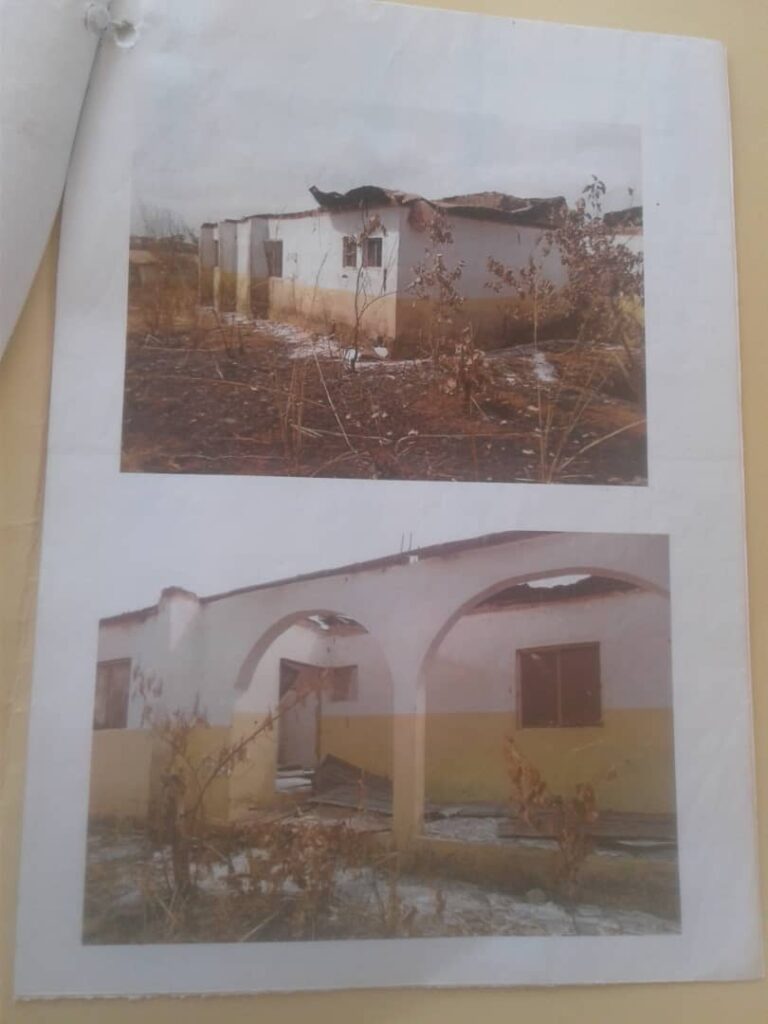
The last straw that broke the camel’s back was the fire disaster in early 2022.
Some residents who spoke with FIJ said they did not know how the fire started. They said all they saw was smoke bellowing from the place. They said there was no sign of bush burning around the facility at the time of the incident. The fire only started and ended on the hospital premises.
TRACKING THE REMNANTS OF THE EQUIPMENT
FIJ found that the burnt roofing sheets and the four water tanks belonging to the facility were kept by Oba Ojo behind his palace’s backyard for safety.
“I directed some young men to bring the four water tanks to my palace when they reported that waves threw away one of them from the top of the elevated water stanchion in order to prevent stealing. The roofing sheets are also with me,” said the traditional ruler.
From the king’s palace, FIJ proceeded to the other health facility where most of the equipment were kept.
During an interview with Oyedotun Tajudeen, a health worker, he told FIJ that patient mattresses, three standing fans, a grinding machine, mortal, a refrigerator, and pestle and other medical items were kept in their facility.
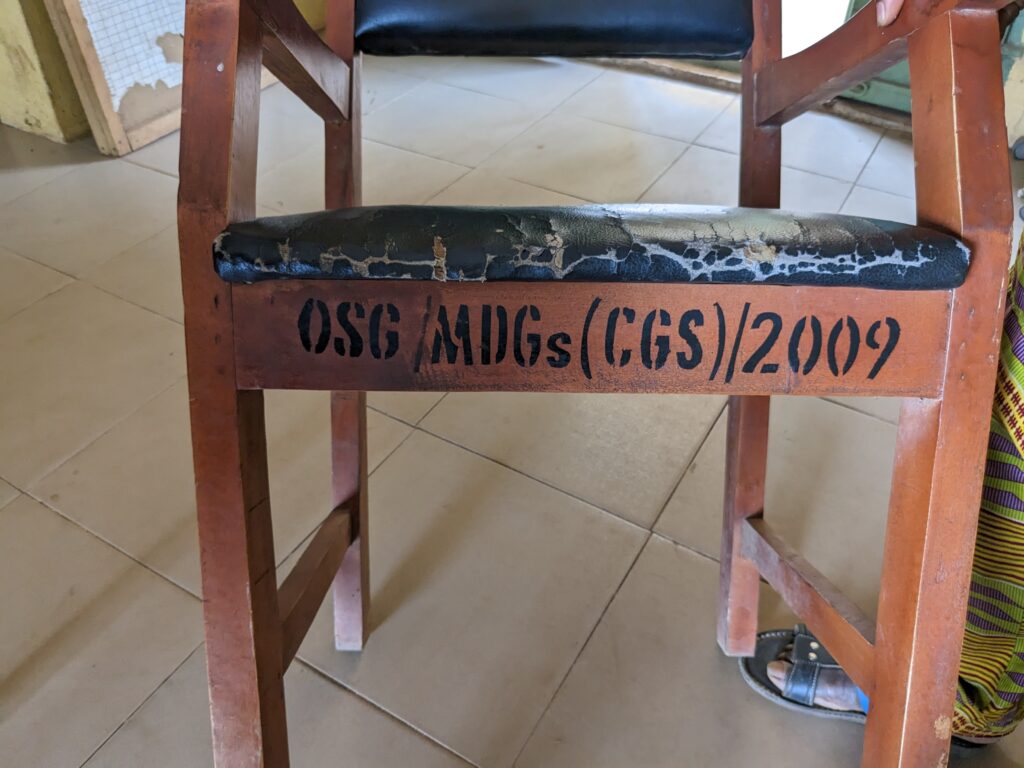
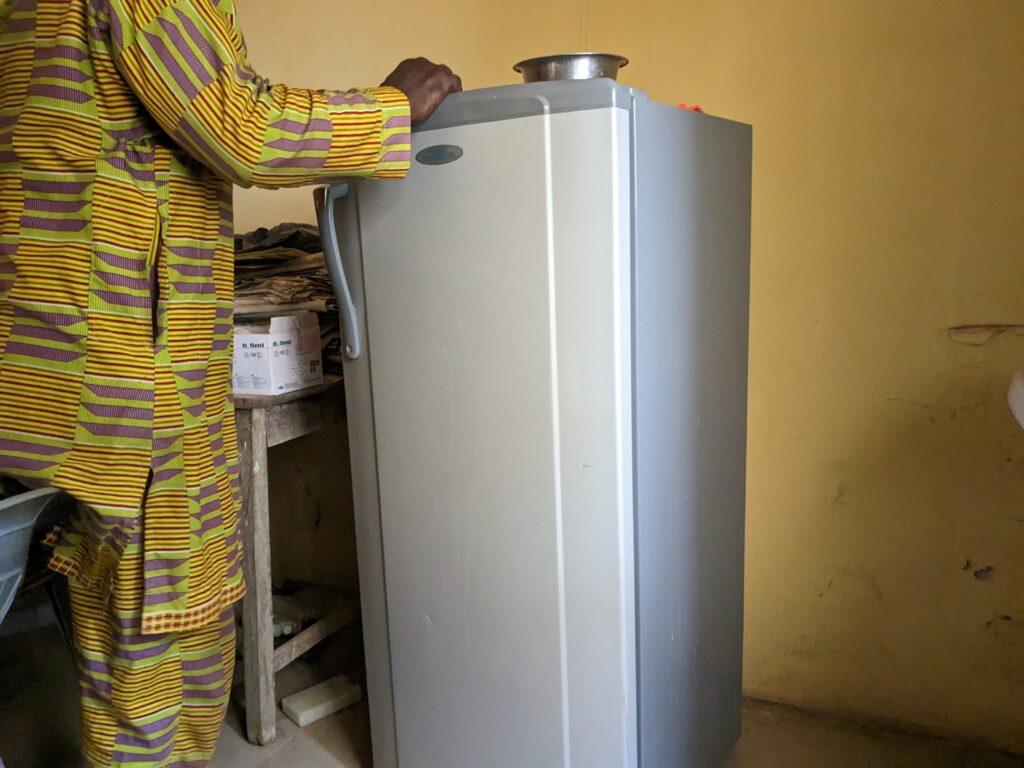
Only one standing fan, according to Tajudeen, was taken to the council secretariat in Bode-Osi by some health officials. He added that the key to the store was with his superior, who was not available during the period.
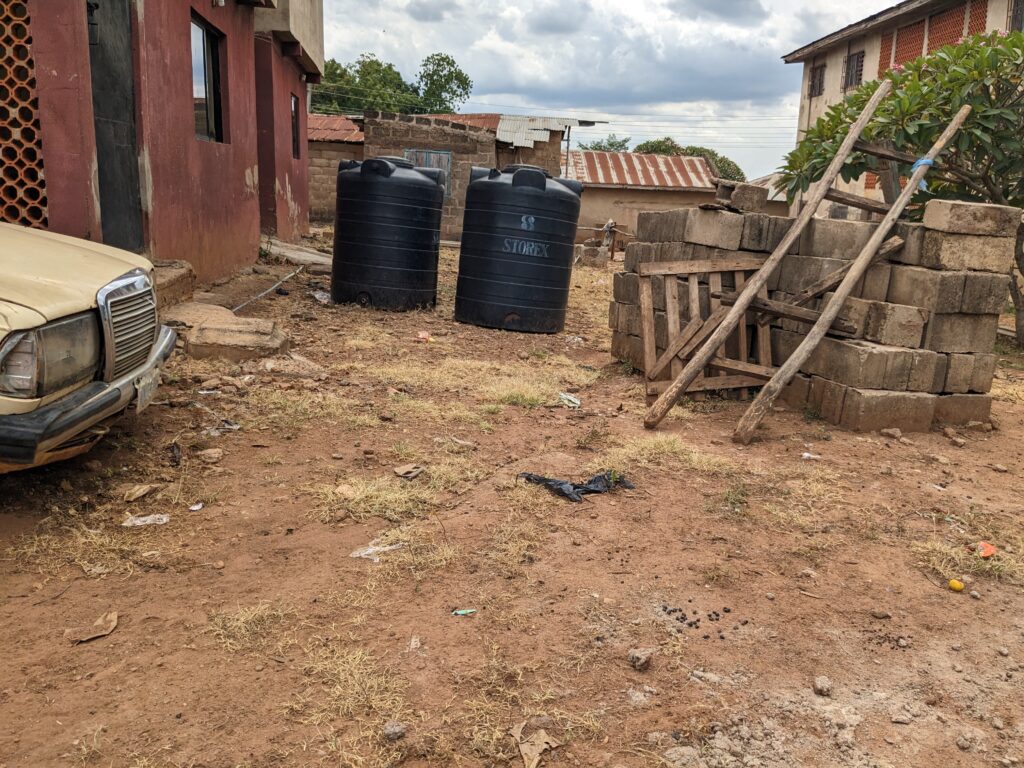

Narrating what he knew about the incident to FIJ, Doctor Adebayo Olusegun, the chief health officer for the local government, said the moment his attention was drawn to the fire incident, he led a team of health care directors to the town for an on-the-spot assessment.
“After the visit, I presented a report to the local and state governments. My recommendation centred on the repair of the building. Till now, the report has not been acted upon,” Olusegun said.
“On the one standing fan you mentioned, I can’t speak to that because I was transferred to another area at some point and I wouldn’t know if my predecessor was aware of it.”
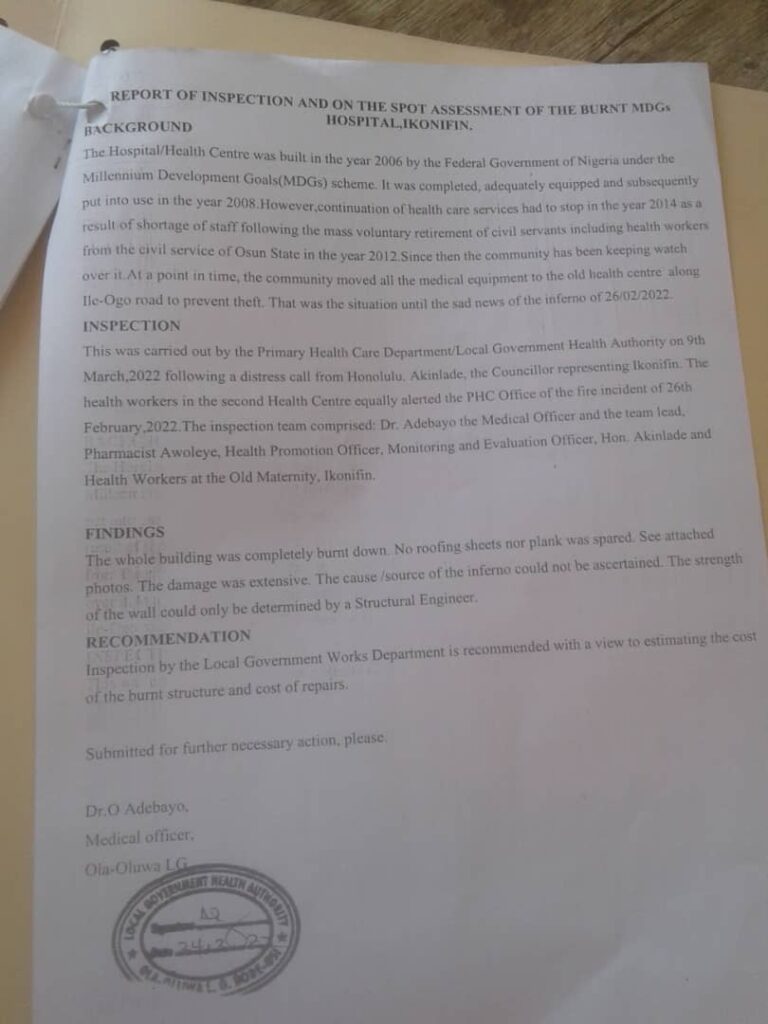
NEGLECT IS DANGEROUS
While in Asamu, the resident feared that the neglect of the facility was dangerous as it could make it attractive to “evil-minded people”.
In the same vein, the worries expressed by the Asamu residents were evident in Ikonifin.
The result of neglect, according to FIJ’s findings, culminated in the destruction of the Ikonifin hospital and the subsequent stealing of equipment from its premises.
In the end, the public funds invested in the place went down the drain, leaving the community with thousands of residents with a small and underfunded primary health centre.
“To be honest, there is no reference hospital in the local government area. As a result, health practitioners mostly refer patients to private hospitals in other places,” said Olusegun.
A Health Preparedness Index report published by SBM Intelligence, a data intelligence firm, in 2022 places Osun State in the 19th position among the 36 states of Nigeria.
The criteria “in arriving at the state’s Health Preparedness Index (HPI) 2022 include the state’s health budget (per capita), the ratio of doctors to patients, infant mortality, and the Human Development Index.”
This reporter witnessed a situation in the local government secretariat in Bode-Osi where a male patient was referred to a private hospital in Osogbo. The attending doctor said to FIJ, “He could have been asked to go to Asamu if it had been operational.”
Subscribe
Be the first to receive special investigative reports and features in your inbox.


